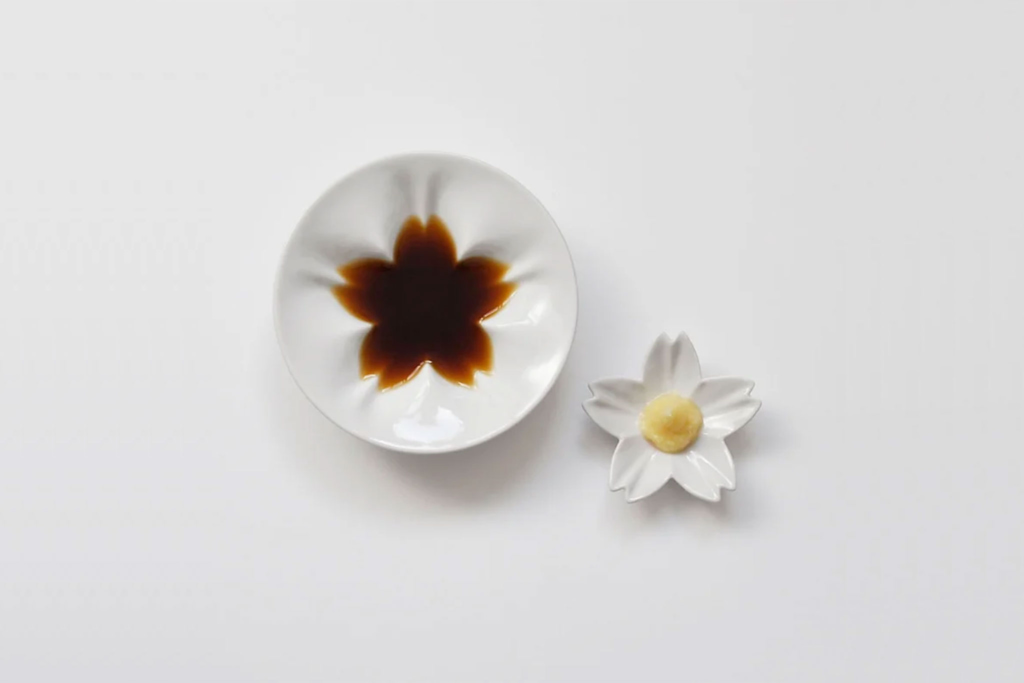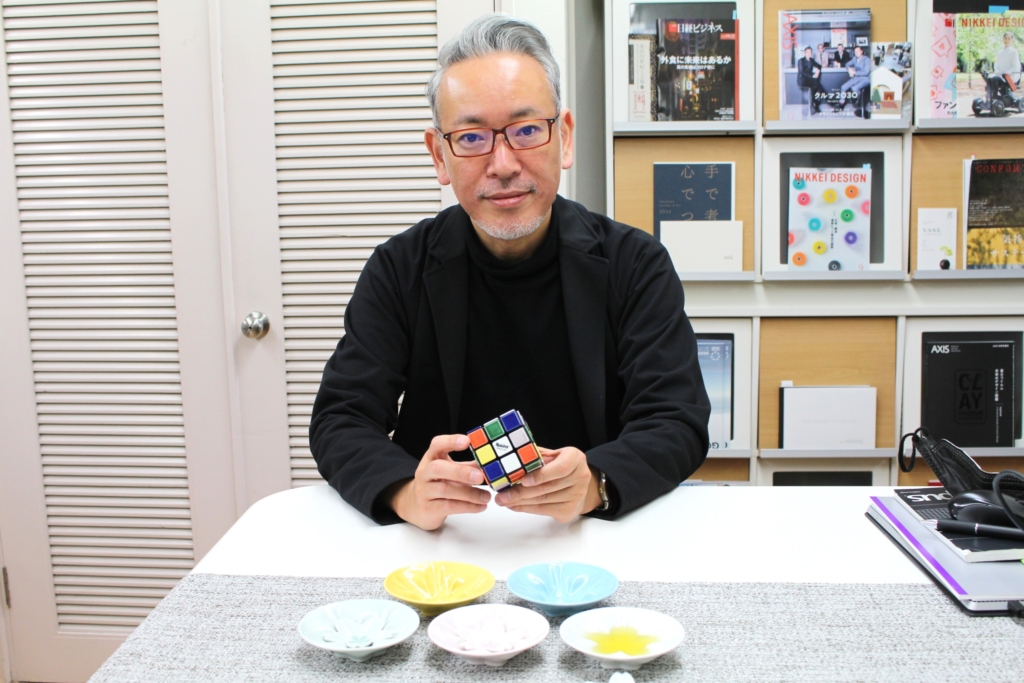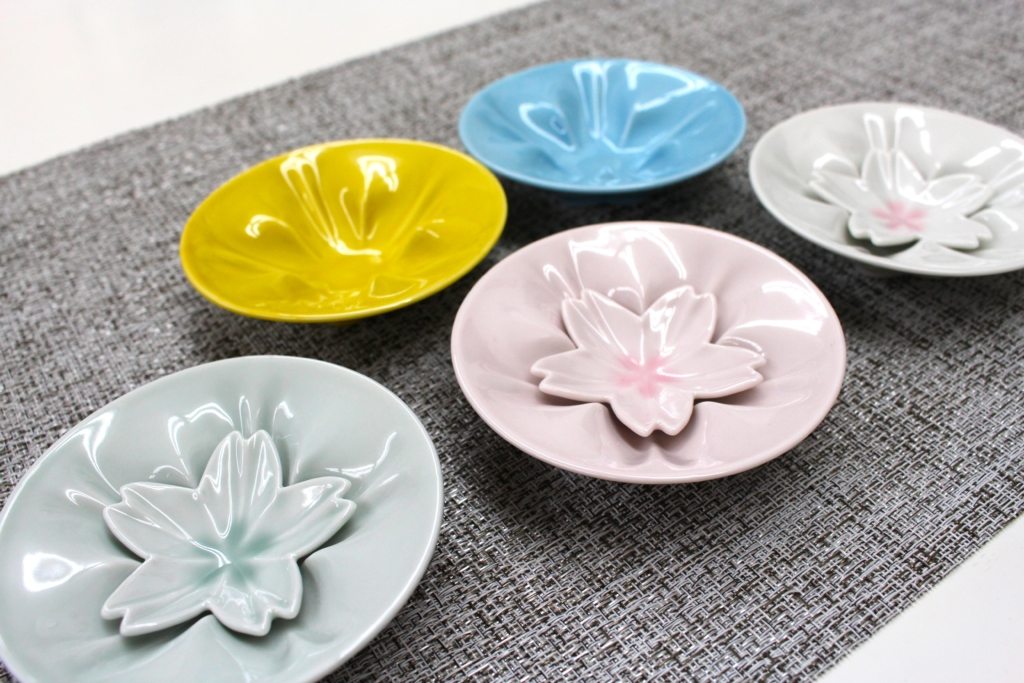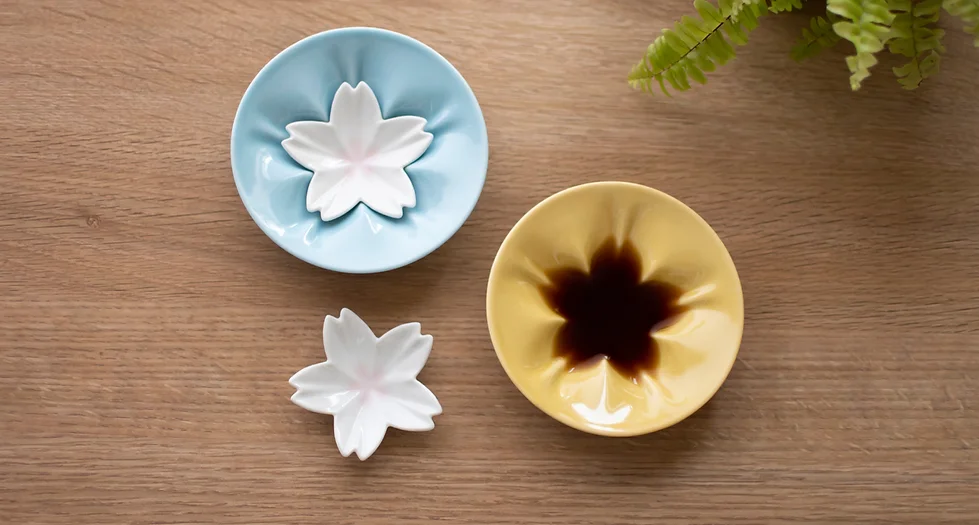When you pour soy sauce into the small dish, the liquid slowly spreads and a cherry blossom blooms. It’s a classic beauty that wows and surprises everyone at the table. The Sakura sauce dish is the creation of Yohei Inagaki, a designer who works to promote Kutani-ware porcelain and other traditional crafts in the city of Kanazawa in Ishikawa Prefecture.
It’s where Inagaki grew up and studied industrial design. After working for a company in Osaka as an industrial designer, he established his own firm, AgeDesign, in 2005. He then started the original brand Hiracle in 2012 with the concept of protecting traditional crafts. The Sakura sauce dish is the first product under the brand.
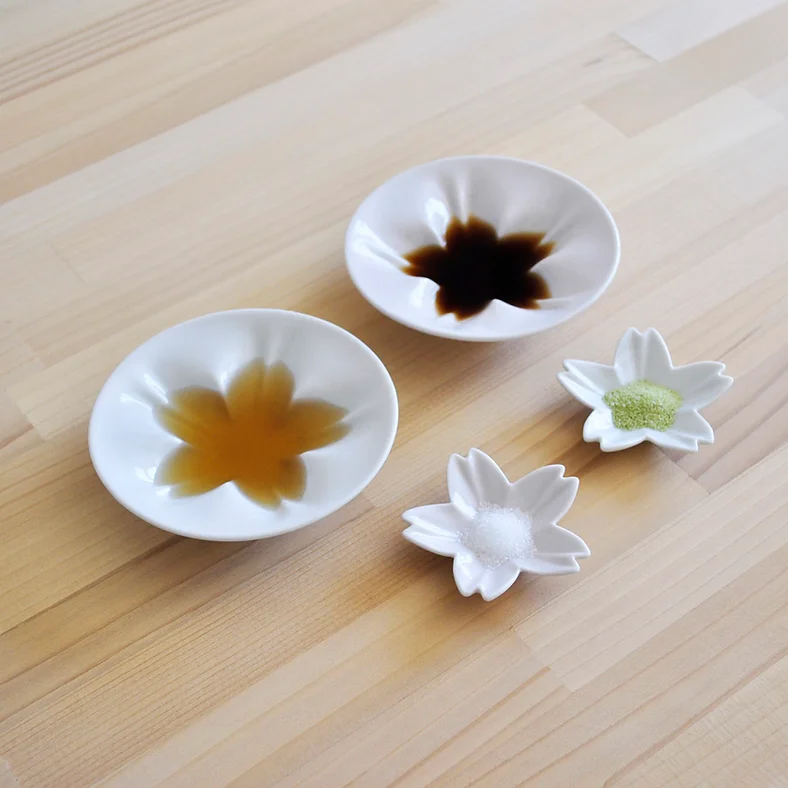
Photo courtesy of AgeDesign
“The traditional crafts market has been shrinking since Japan’s bubble economy burst in 1991, and the industry faces a shortage of successors,” Inagaki explains.
Data from the Ishikawa Prefecture Ceramic Commerce and Industry Union shows the sales of Kutani porcelain stood at around 15 billion in 1989, but the figure significantly declined to 4.1 billion yen in 2021. The Union’s membership also fell by half from 500 to 250 during the same period.
Inagaki wanted to revive the local industry, but the question was, “What exactly can we a small design office do for that aim?”
Saving Traditional Crafts
Inagaki turned to Kutani craftspeople specializing in producing porcelain bodies in large amounts before over-glaze painting. These people are called “kiji-ya” in Japanese. The designer says they rarely come under the spotlight in the Kutani industry, where divided manufacturing steps are usually subcontracted to different workers.
“Their successors are rapidly decreasing, while wholesalers take center stage in promoting and branding the tableware,” Inagaki explains. “Losing those craftspeople, however, makes it difficult to mass-produce the tableware and sell them globally,” he warns.
So Inagaki teamed up with one of the kiji-ya craftsmen, Tatsuru Kida, to create Kutani-ware products without painting, despite the tableware traditionally coming in five vivid colors: green, yellow, blue, purple and red. “We wanted to create something that can compete on shape alone,” Inagaki says.
The designer thought it would be interesting if a certain shape emerged when sauce was poured on the plate. He then chose a cherry blossom as the shape because the flower best represents Japan. The Sakura dish has since been on display at an exhibition in France. It’s also been put on sale in China, the United States, Taiwan, Hong Kong, Singapore and South Korea.
“People say it’s fun to see a flower opening on the plate,” Inagaki says about reactions from customers. “They say their children enjoyed the trick. It’s good to hear that the plate starts family conversations on dining tables.”
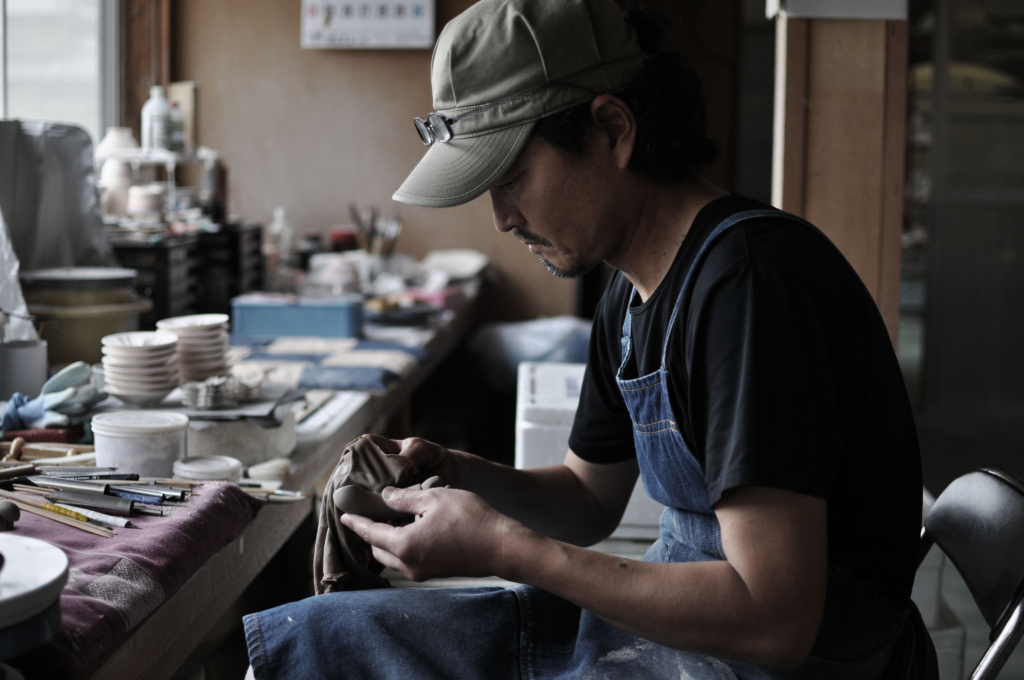
Tatsuru Kida | Photo courtesy of MegaHouse Corporation
Help for Ukraine
Inagaki’s drive to help cultures goes beyond his native Japan. The Sakura porcelain dish originally came in three light pastel colors: white, pink and blue. After the war broke out in Ukraine in February 2022, however, Inagaki released two more versions in vivid yellow and blue — the colors of Ukraine’s national flag — as an initiative to support the Ukrainian people.
“Kanazawa, for instance, has traditional tea ceremony and geisha cultures. But those cultures would be entirely lost if cultural assets are gone,” Inagaki says. “It’s tough to see [cultural] assets in Ukraine being destroyed[…].”
Inagaki and Kida added detailed adjustments to the colors of the limited Ukrainian version of the Sakura dish so everyone could instantly tell the colors come from Ukraine’s flag. However, at the same time, they made sure the colors looked good on dining tables.
The product went on sale online in May 2022. At the time of writing, 50 percent of its sales have been donated to Japan for UNHCR and other non-profit groups working for Ukrainian refugees.
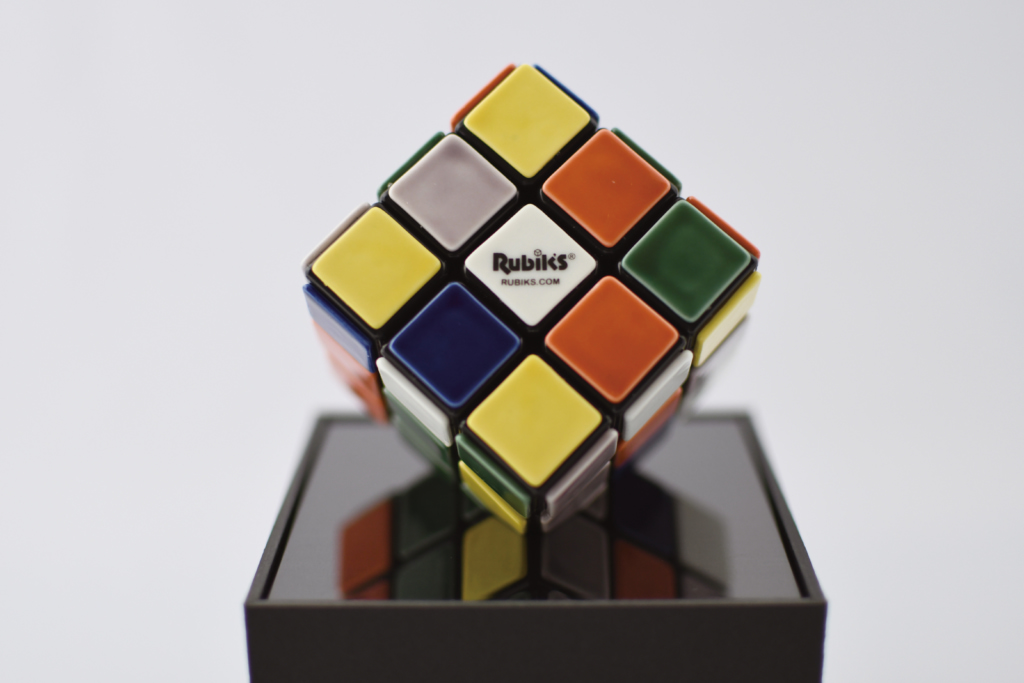
RUBIK’S TM & © 2023 Spin Master Toys UK Limited, used under license. All rights reserved. Photo copyright of MegaHouse Corporation.
A Battle Against Oblivion
Inagaki’s desire to protect old but valuable things is also reflected in his other works. “Kogei Rubik’s Cube,” a fusion of the Rubik’s Cube and Kutani porcelain, is one of them. The Rubik’s Cube, which was born in Hungary in 1974, is another thing that Inagaki wishes people picked up again.
“Toys are being replaced by smartphones these days,” he says. “But I want people to rediscover the value of things that should be passed onto future generations over time.”
Planned and designed by Inagaki, Kogei Rubik’s Cube was released by Japanese toy maker MegaHouse in 2021. Its tiles are crafted in Kida’s ceramics factory with Kutani techniques. Users can enjoy solving the intellectual cubic puzzle, while touching the authentic traditional craft by hand.
Whether it’s helping Ukrainians or reviving the traditional craft industry, Inagaki and Kida are taking on tasks that are too big for just one designer and one craftsman. “But we can’t just wait and see,” says Inagaki. “We want to do something we can do. That’s what Kida and I always talk about.”

